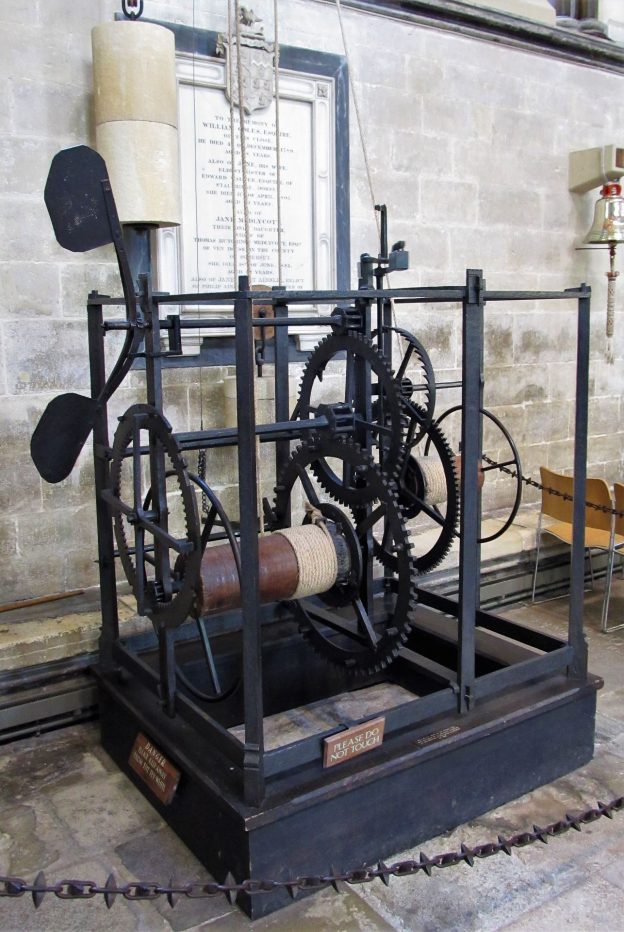On the Michaelmas 1402 plea roll of the King’s Bench, there is a case with things to say about both ‘criminal’ law with regard to sexual offences, and also the commercial/contractual aspects of sexual misbehaviour in the medieval period.
The case, from Westmorland in the north of England, is to be found at KB 27/566 m.21 and, via AALT, here. It is an appeal of rape, brought by Joan London of [Maulds Meaburn] against Henry del Croft of Westmorland, Sir William de Threlkeld,[i] and John his son, and Thomas de Faucet, together with John Williamsservant Threlkeld, William Cook de Threlkeld, Thomas de Bowes, chaplain, and William Aliceson de Threlkeld.
Joan said that she had been in the king’s peace at [Maulds Meaburn] on 19th April [1402], when Henry came at about 11 pm and raped her, feloniously, deflowering her of her complete/pure virginity, and, feloniously, having carnal knowledge of her. The others were accessories.
There are a lot of standard form elements to the entry (the usual statements about pursuit etc.) and I will pass over these. What is unusual, however, is the defence. Rather than just saying ‘Not guilty’, Henry said that he and Joan, after discussion, agreed that Joan would be his concubine, in return for 6s 8d, he paid her this sum, and slept with her. He denied felony. All of the defendants were acquitted.[ii] Despite the utterly predictable outcome, (for those of us who are familiar with these cases, anyway), there are a few of interesting points:
- The wording of the accusation
This is of interest for those who look at crime/sexual offences in historical context, There is one slightly unusual word here – the accusation is not just the usual rape/deflowering/virginity vocabulary, but adds pura to virginitate. ‘Purity’ is more commonly found next to ‘widowhood’, in ‘civil’ cases in which there is some argument about whether a woman did something during her marriage (and thus bringing in the ‘coverture’ rules) or afterwards, when she was able and obliged to take legal responsibility for her own actions. An interesting variant, then, and one which we might just take as suggesting some general ideas about women at different stages of life. That needs some further thought, but it’s worthy of note.
- The defence
Note that this is not the familiar ‘she must have consented this time as well’ defence based on previous sex with the defendant: it is ‘she did consent in advance, and so cannot use the common law to complain about having been penetrated’.
- The alleged transaction
On a more ‘crime meets contract’ theme, there is something to say about the alleged bargain here,
The narrative about the agreement between Henry and Joan has the role, in the context of the appeal of felony, of defending Henry against the allegation that he raped her (modern sense) thus the reference to her assent and her will in this matter. We might note that the assent and will are ranged with an agreement to be his concubine, not with the particular penetration with which the appeal charges Henry. This raises the issue of just what it meant to be a ‘concubine’. It is a word which comes up from time to time in legal records, often in connection with ‘priests’ women’. It is not inevitably sexual, though clearly, in this context it is. It is something which could bear greater scrutiny in terms of its implications and its interesting location on the borderline between status and contract, as this case seems to illustrate.
We must pass over the question of whether there actually was a ‘deal’, between Henry and Joan, but, as ever, even if the story was a lie, it must at least have been a plausible lie, so, what can we learn?
The deal was said to have been reached between Henry and Joan. There is no hint of the involvement of a pimp, bawd, madam, or even a family member negotiating on her behalf. It was, therefore, considered plausible for a woman to strike her own bargain with a man, to become his concubine. The entry portrays an orderly, businesslike, procedure: Henry and Joan discuss the matter (they have a colloquium about Joan becoming Henry’s concubine), and reach agreement, Henry gives her 6s 8d and Joan agrees to be his concubine (the term is not given, but this surely represented the price of more than one encounter). The deal is expressed in both unilateral and mutual terms: Joan se aggreavit and they had an agreement (concordati fuerunt). Henry took Joan as his concubine with her assent and will, and [‘only then’ is, it seems to me, implied] slept with her.
It is interesting to see the use of this businesslike, contractual, narrative in this context. Two things, in particular, strike me. First of all, to work as a defence, the story really has to place Joan as being on a level playing field with Henry, able to strike a bargain. We would need more facts about the parties to know whether that was remotely likely to have been true, though I do wonder about the tension between the two-parties-bargaining-freely version of events in Henry’s defence and the allegation by Joan that there were rather a lot of other people involved, before, during and for a month after the event. Secondly, although we are deep in the period of central regulation of ‘contracts of employment’ and wages, the terms on which a ‘concubine’ might ‘work’ were clearly not part of this area of legal prescription and enforcement. It is interesting to reflect on what this meant. Although they were ‘free from the red tape’ of the labourers legislation, and did not have to sign up to fixed terns, so that one might have thought they could leave their ‘employment’ at any time (and so refuse sex), this was not, apparently, the case. Whether or not developments towards the more coercive in employment which was covered by the labour laws had an impact upon areas like this, not covered but possibly analogous, must, for the moment, remain in the realms of speculation – but it isn’t particularly fanciful to imagine that it might have done. I note that sometimes, women may be described in legal records as ‘servant and concubine’ (e.g. here, from 1399), which may well indicate an idea of ‘concubine as employee’.
Anyway, this record suggests that a deal, even a sinful deal, was not something that could be called off, at least once money had been handed over. While I presume the common law would not have enforced such a deal in a straightforward ‘contract law’ manner, we can see that the way in which the law of felonious rape was treated in practice meant that it afforded no protection for a woman who might want to get out of such an arrangement.
Some tentative conclustions: ‘free’ contracts and contracting unfreedom
Joan’s disadvantageous position bears obvious comparison with another ‘freely contracted’ status, that of marriage, with its consequences under the emerging rules of ‘coverture’. Just like a wife, a concubine would seem to have bound herself for the future in terms of sexual compliance, so that she would not be able to succeed in an appeal of rape. The way in which Henry’s case was put – admitting sex and founding his defence on the alleged concubinage agreement – is strongly suggestive of this being accepted.
One might also compare the ‘concubine’ with the prostitute/whore (the terminology here is very difficult, but I mean somebody entering into one-off transactions). Bracton II, 415 lumps these together to some extent, as women who can be raped (albeit that this will attract a less serious punishment than rape of a virgin). Though the ‘concubine’ seems to be less disapproved of than the prostitute here, it may be that the common law’s increasing interest in and respect for contractual bargaining, possibly reinforced by ideas about ‘making the lower orders stand to their obligations’, as Robert Palmer had it, even if not strictly covered by the labour laws, left the concubine in a rather worse position than the ‘common whore’, free to transact her business on an encounter-by-encounter basis, and presumably not obliged into the future to do the bidding of her customer/master.
This case should, if nothing else, remind us: (a) that it is essential not to tell ‘de-gendered’ stories about the development of legal categories and doctrines; and (b) that material from what is now generally seen as one discrete area of legal doctrine and practice may be relevant to another. Here, we have the use by a man, against a woman, of the idea that the common law should take account of, and accord force to, private contracts. The negative effect of contract ideas upon ‘criminal’ law protections for women is not something which should be ignored by legal historians. For all of the ‘rises’ and ‘triumphs’ of the history of the law of contract, we should remember that the impact of legal development is not to be measured only with regard to the experience of (free, capable) men.
GS
16/6/2024
[ii] Joan was said to have brought a false appeal, for which she was financially liable. A jury found that she was not able to pay the damages assessed, and the former defendants now went after a man, Richard de Threlkeld, said to have helped her bring the allegedly false appeal.






